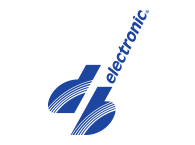Base materials for flexible PCBs
Flexible materials are used for single-sided, double-sided and multilayer PCBs. Flexible materials mainly consist of polyimide, which is also known under the trade name of Kapton® by Du Pont.
For simpler applications, the more economical Flexlam® (0,125 mm thick FR4 with 18 μm or 35 μm base copper) can be used.
Essentially, 2 different base materials are used:
Without adhesive
• Polyimide carrier material as insulator
• Copper foil as metallic conductor

With adhesive
• Polyimide carrier material as insulator
• Adhesive as glue between the copper foil and polyimide
• Copper foil as metallic conductor

Cover foils
Cover foils are based on polyimide, coated on one side with adhesive, and used to cover the tracks on flexible circuits. The following mechanical processing is possible: Drilling, routing, laser processing and punching.
Varnishes are also used instead of solid cover foils (solder resist varnish, photostructurable PC film, 75 μm).
Flexible PCBs with reinforcement
For mechanical reinforcement in areas where heavy components or connectors have to be placed, "rigid areas" can be created using non-foil-clad base materials (FR4, polyester). Thinner reinforced areas can also be realised by using foils.
Design / pattern layout
Essentially, the same design guidelines apply as for rigid-flex PCBs.
Structure variants
Flexible PCBs can be produced from polyimide with adhesives or without adhesives. The materials containing adhesive are slightly more econo- mical and still meet the requirements of flexible PCBs.
Material without adhesive are used for higher-quality heavy-duty circuits if the following advantages are important:
• The PCB can be made thinner (see material table). This increases the flexibility and reliability when bending, as the copper is subjected to less strain.
• Temperature fluctuations can be better compensated as the different coefficient of expansion of the adhesive has no effect. |
 |
Standard materials for flexible PCBs (thickness)
| Polyimide |
Copper
single / double sided |
Adhesive * |
| 25 µm |
18 µm |
|
| 25 µm |
35 µm |
|
| 25 µm |
18 µm |
12–25 µm |
| 25 µm |
35 µm |
12–25 µm |
| 50 µm |
18 µm |
25 µm |
| 50 µm |
35 µm |
25 µm |
| 50 µm |
35 µm |
|
| 50 µm |
18 µm |
|
 |
 |
 |
* Adhesive thickness depending on brand
Standard cover foils consist of 25 µm polyimid and 12–25 µm adhesive. Other combinations, materials and foils on request.
Planning
The number of flexible layers should be kept as small as possible. Thus, the flexibility of the circuit is high, and the cost can be reduced to a minimum.
Bending radius / bending cycles
The bending radius follows the intended application. Flexible PCBs that are only used statically can be bent more strongly than connections that are subject to continuous movement..
| Bending radius |
Number of bending cycles |
| 5 x flex thickness |
1 |
| 24 x flex thickness |
10 |
| 250 x flex thickness |
> 10000 |
|
 |
 |
The dynamic flexural strength can only be guaranteed reliably with single-layer flexible PCBs or connections. The copper should be in the neutral zone, i.e. under bending stress the copper must not be extended or buckled.
A binding statement on the reliability of the PCB regarding the bending stress can only be made in individual cases through appropriate tests. |


